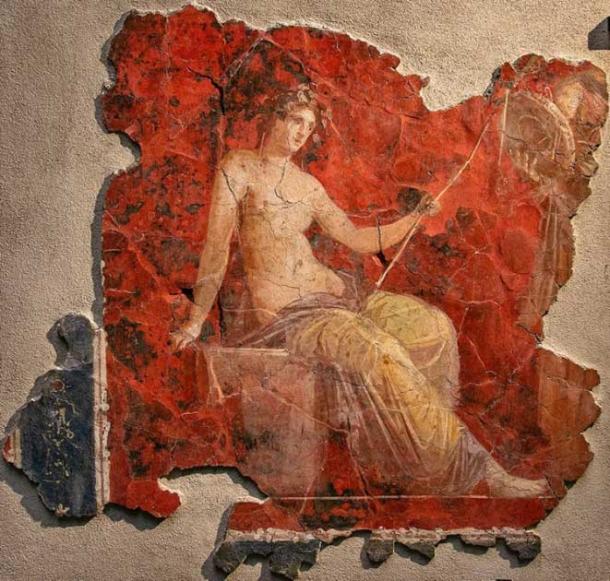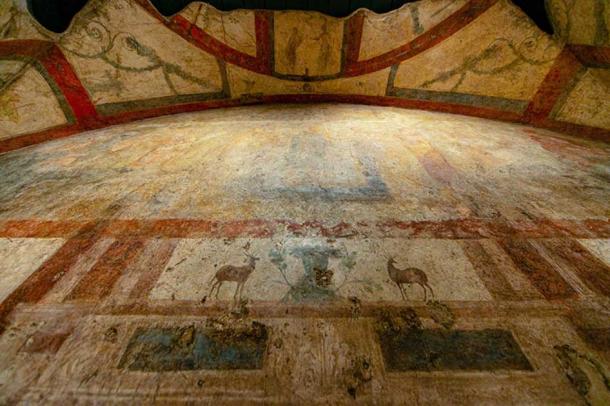An Ancient Home Found Beneath the Baths of Caracalla Is Now on Display
On their own, the early third-century Baths of Caracalla in Rome are a site of imposing magnificence. But now, visitors will get to see what existed at the site before the lavish public baths were built: a Roman home with frescoed ceilings and a prayer room paying homage to Roman and Egyptian gods.

“For the first time, visitors can admire parts of the frescoes from the ceiling of a second room of the Domus [home] that collapsed,” Luca del Fra, spokesperson for the Special Superintendence of Rome, tells CNN’s Livia Borghese and Jeevan Ravindran.
The two-story home was built around 134 to 138 C.E., in the time of the Roman emperor Hadrian, reports Nicole Winfield for the Associated Press (AP). But the structure was dismantled in part to make way for the baths, which opened in 216 C.E.
These ruins went largely undetected until the mid-19th century when they were discovered roughly ten yards below the baths.
Another century passed before they were excavated, at which point the prayer room and parts of the frescoed dining room ceiling were taken away to be restored, per the AP.
Now, the ceiling frescoes and prayer room are open as part of a permanent exhibition, which will help visitors see the baths in the context of what came before.

The ceiling depicts images of Bacchus, the god of wine, in “prized Egyptian blue and Cinnabar red pigments,” as conservators told the AP.

The inner temple shows the Roman gods Jupiter, Juno and Minerva, while also depicting silhouettes of the Egyptian deities Isis and Anubis. This religious melting pot suggests a mixing of Roman and Egyptian culture and religion, even in the domestic space.
“It’s stunning that there are two separate pantheons or groups of gods, one from the Greek-Roman tradition … and one from the Egyptian tradition,” del Fra tells CNN. “This could indicate that the family who owned the Domus had a close relationship with Egypt.”
READ ALSO: ANCIENT BOWL FROM TIBET SHOWS ALEXANDER THE GREAT – THE JEWISH VERSION
The site’s director, Mirella Serlorenzi, tells CNN that the juxtaposition of the two cultures is an example of the “religious syncretism typical of ancient Rome since its foundation.”

Additionally, experts are interested in the frescoes because other existing evidence of Roman wall art is found largely in Pompeii and Herculaneum, two towns buried and eventually preserved by the eruption of Mount Vesuvius in 79 C.E., Serlorenzi tells the AP.
“Roman painting after the first century C.E. has remained a mystery,” she adds, “because we just haven’t had rooms so well-conserved.”





